
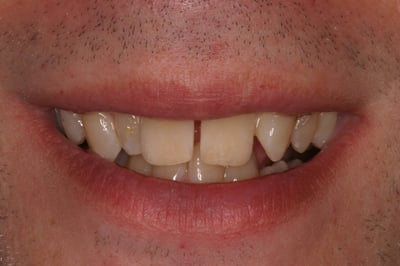
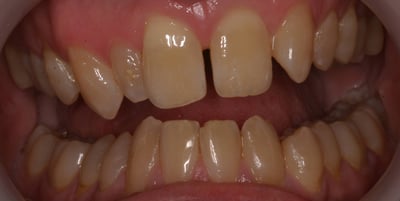
Mr L saw Kit Spears at Elmsleigh House because he didn’t like the appearance of his teeth due to gaps between them and their different sizes.
Kit performed a thorough examination and determined that Mr L had several teeth removed when he was younger, including his upper left lateral incisor. His upper right lateral incisor was a little smaller than normal and also inset. His central incisors had a small gap between them, and his bite was slightly slanted to one side, making his upper right canine seem longer.
Kit discussed two broad options: to use orthodontic treatment to move the position of Mr L’s teeth; or to accept the position of his teeth as they are and improve their appearance.
Orthodontics would improve Mr L’s bite and move his upper left canine back, and then Kit would replace the missing lateral incisor with a dental implant. Restorative treatment could be a veneer on his right lateral incisor and some composite bonding. Although this would be the best option to improve Mr L’s bite, he wasn’t keen on the approximate timeframe of around two years for orthodontic and implant work.
Kit advised he could use cosmetic restorative treatment to improve Mr L’s smile without orthodontics. First he would whiten Mr L’s teeth. Kit took impressions of his teeth, and whitening trays were made to fit his teeth precisely. He was shown how to apply carbamide peroxide whitening gel to the trays and fit them securely in place. Mr L took home his trays and sufficient whitening gel to wear the trays for two to fours hours each day, until he achieved the brighter shade desired.
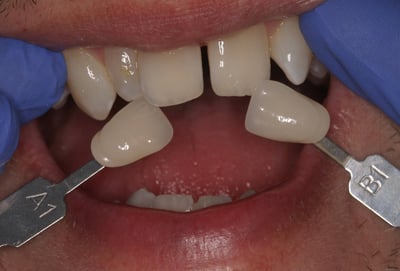
Kit then used composite bonding, where tooth-coloured resin is bonded to Mr L’s teeth, to alter the shape of his upper left canine and make it look more like a lateral incisor, as well as closing the gap between his central incisors (front teeth).
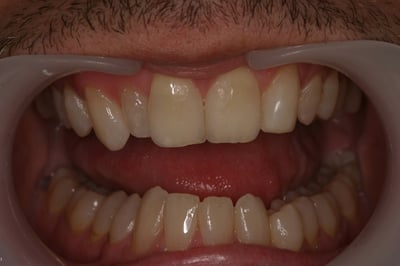
Kit applied a ceramic veneer to improve the appearance of Mr L’s upper right lateral incisor; as this tooth was inset, this meant the veneer could be placed with minimal modifications to the tooth. Kit then slightly shortened and reshaped the upper right canine to make it look less long.
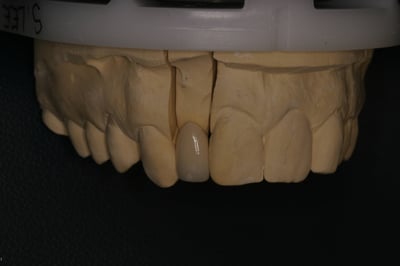
This was a minimally invasive approach to dentistry, as the ceramic veneer could be placed without the tooth being drilled down, and the composite bonding was an additive restoration, rather than a filling requiring drilling.
The ceramic veneer has a superior appearance and more resistance to staining and chipping compared to composite, and typically lasts 10–15 years. As the veneer was placed on an inset tooth, this made it appear wider than it is and more in line with the rest of the teeth.
Composite bonding generally lasts for, and looks its best, for around 4–8 years. It can stain and chip over time, but can be replaced, refurbished or repolished as necessary.
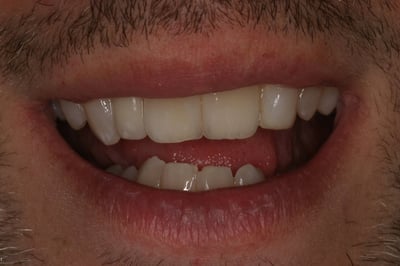
Mr L had all treatment completed within three months and is delighted with the results:
"I am delighted with the outcome of the treatment. Kit is a perfectionist, and the whole experience was relaxed and ahead of my expectations" Mr L.
